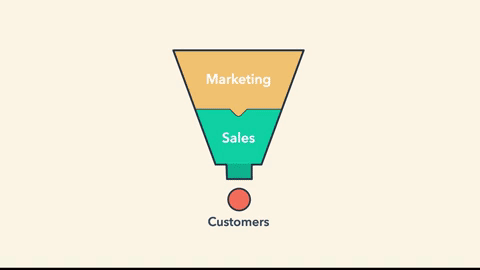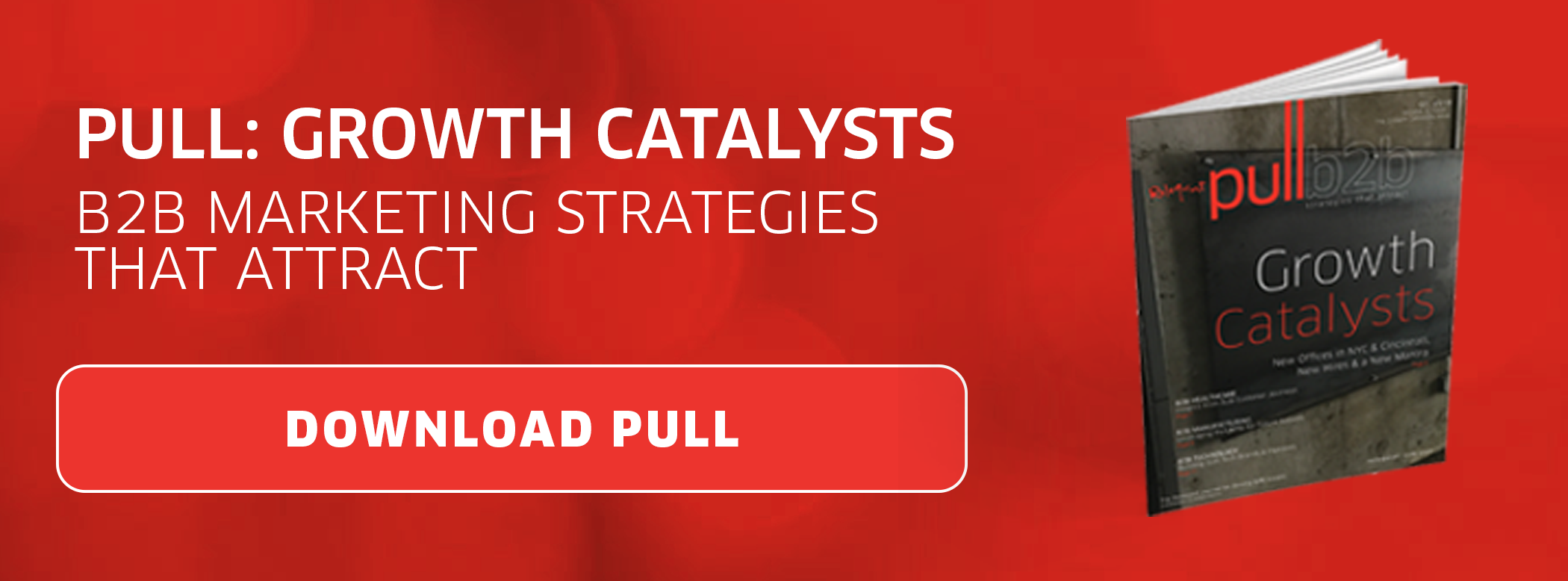 Poised to go from “thought leader” to “disrupter,” HubSpot is transforming the sales cycle from funnel to flywheel.
Poised to go from “thought leader” to “disrupter,” HubSpot is transforming the sales cycle from funnel to flywheel.
Customer experience is emerging as the dominant factor in how businesses are competing, and HubSpot’s new Service Hub aims to make it easier for businesses to turn happy customers into active promoters. So what does the flywheel mean for the future of B2B marketing?
The Flywheel in Focus
HubSpot traditionally defined the sales funnel to have three main stages — awareness, consideration and decision — and kept the sales funnel and customer satisfaction relatively siloed.
But the way B2B customers interact with companies isn't solely restricted to traditional customer service channels like phone and email anymore. They’re talking about their experiences with products and services and interacting with companies on social media, review sites, their own websites, forums and numerous other channels.
Whether they’re reading a two-year-old blog post or having a real-time discussion on Twitter, buyers are responding to these honest indictments of the customer experience and testaments of product quality, rather than to traditional digital advertising and marketing campaigns.
After HubSpot researchers surveyed customers and found that word of mouth was their biggest growth driver, they developed the flywheel model. The flywheel takes an “outside-in” approach with customers at the center pulling in prospects, surrounded by marketing, sales and service.
What the survey showed was that buyers have access to a wealth of information online about other customers’ experiences, and they’re using that information in a less predictable path than what was laid out in the traditional funnel.
And their expectations of customer service have dramatically changed: If they can’t find answers to their questions or solutions to their problems in a few clicks around the web, they expect to get an answer quickly from the company’s website or social media. As HubSpot CEO Brian Halligan says, the flywheel is meant to spin at the rate of customer delight.
Traditional digital marketing strategies still have their place in driving brand awareness, traffic and leads, but the sales funnel as we knew it is definitely waning. HubSpot's shift to the flywheel model simultaneously gives more power to the customer and improves their experience, while giving companies using Service Hub more credibility than any marketing materials could ever give them.
What Service Hub Includes
HubSpot’s Service Hub is more than just a diagram of a flywheel intended to replace the sales funnel. It's an actual end-to-end solution designed to improve and capitalize on the customer experience in a scalable way.
Service Hub’s features include:
- A universal inbox called Conversations that helps marketing, sales and service teams collaborate on customer support by consolidating conversation channels (email, live chat, and a chatbot builder) into one dashboard. Conversations is already available as a free tool to existing HubSpot customers.
- A new CRM feature called Tickets that will serve as a home base for support teams to track, order, collaborate and deliver on customers’ issues.
- A Knowledge Base that helps turn common customer tickets into helpful articles on your website that automatically index on Google.
- A customer feedback tool that starts with a series of surveys and helps you build new marketing campaigns based on your biggest promoters.
- A new service reporting dashboard that contains all of the above.
Service Hub is well-suited for focusing on customer relationships, a natural evolution of inbound marketing. And it has the power to help companies truly harness the power of highly-engaged and delighted customers.
How Service Hub Fills the Gaps
Affiliate marketing programs and the Net Promoter Score are still effective ways to measure customer satisfaction, but they have their limitations. The basic tenets of both — getting your customers involved in the sales process and measuring how many customers are promoters opposed to detractors — serve as the foundation of HubSpot flywheel, but with additional nuance.
For instance, affiliate marketing programs can function irrespective of your customer experience and be open only to select applicants or have a "plug and play" style. The Net Promoter Score is also flawed because customers not only don't usually volunteer ratings, but they also might report a one-time poor experience as opposed to an overall good experience.
Service Hub is designed to fill in the gaps that these tools present by making happy customers a focal point, then improving the experience for unhappy customers. However, Net Promoter Score is also included in the new Service Hub platform for companies that want to deploy it along with any other surveys and customer insights.
How B2B Companies Can Benefit from Service Hub
While Service Hub has obvious applications for customer service-centric B2C companies, the B2B customer journey can also be streamlined with Service Hub. For instance, Tickets and Knowledge Base could prove to be invaluable tools for B2B SaaS companies looking to save time responding to customer issues.
Such omnichannel approaches — as opposed to making email and the phone the primary means of contacting customer service — can also shorten notoriously long B2B sales cycles by giving decision-makers additional means to ask questions and troubleshoot in real time using live chat. In fact, B2B companies with high customer engagement scores achieve 50 percent higher revenue/sales, according to Gallup's 2016 Guide to Customer Centricity Report.
And Service Hub’s customer feedback tool will make it easier for companies to turn around new marketing content, such case studies, based on customer success stories. Multiple studies, including ones by the Content Marketing Institute, have shown that case studies are one of the most effective types of content in B2B marketing.
Service Hub Pricing, Pros, Cons & Predictions
We’ve already seen a great deal of buzz in the digital marketing sphere about HubSpot’s Service Hub, and with good reason. Its native integration with HubSpot’s all-in-one marketing, sales and CRM platform likely will be a big plus to users who are currently using third-party customer service software. We also like that Service Hub combines multiple tools into one product, rather than offering and pricing each tool individually.
All of those tools do come with a cost, of course. Service Hub starts at $400 per month for five users, regardless of whether you’re an existing HubSpot customer or purchasing Service Hub as a standalone product. Additional users, reporting and the API cost extra.
With all of its potential benefits, keep in mind that Service Hub is still new. It might hit some bumps in the road as it rolls out, and features could change after HubSpot users provide feedback.
But with the demonstrable firepower of HubSpot's already robust and user-friendly arsenal of marketing tools, Service Hub is poised to take the platform to an unprecedented new level. The flywheel model has major potential for disruption, one happier customer at a time. ![]()







 By
By 

